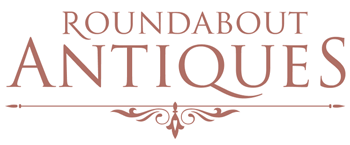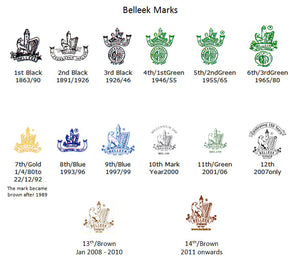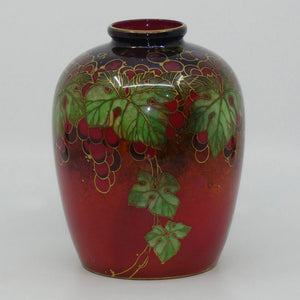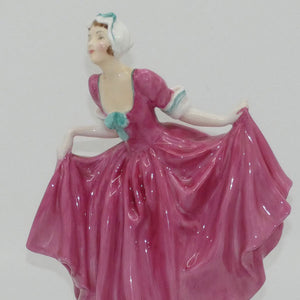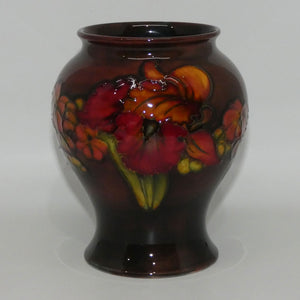The nuances of Royal Doulton Seriesware

Royal Doulton Seriesware was the creation of the renowned Charles J. Noke, and some of the very first seriesware was patterns such as the iconic Blue Childrens, Isthmian Games and Gallant Fishers (we have seen these with the earlier Doulton Burslem stamp).
Noke was first employed by Doulton at Burslem in 1889, and his influence on the seriesware line is profound. Seriesware was initially known as Novelty Art Wares or Fancy Lines - the premise that the items could "adorn yet serve some useful purpose". Series Ware was Nokes great vision; and it is characterized by a large range of shapes decorated with many series of different scenes. It is interesting to note that Royal Doulton series drawn by Noke often carry a facsimile of his signature.
Noke oversaw a skilled team of artists; amongst those who worked on the series ware are William Grace, Harry Allen, Walter Nunn, Arthur Eaton, Charles Crombie, George Holdcroft, Charles Simpson, Stanley Woodman, Cecil Noke, Harry Tittensor, Leonard Langley and Victor Venner.
Seriesware took illustrations from popular illustrators of the time and we see patterns from the work of the iconic Charles D. Gibson (Gibson Girls), David Souter (Souter Cats), Cecil Aldin (Aldins comical Dogs) and the satirical work of Henry Mayo Bateman (Golfers and Fishers).
Seriesware also drew design inspiration from popular Literary greats such as Charles Dickens (the iconic Dickensware line) and poets such as Shakespeare (Shakespearean).
World War II interrupted the production of Seriesware, and post War, the lines never saw the same collecting vigour from the consumer.
One of the common questions we are asked by beginner collectors is why do Seriesware pieces like a trio all have different scenes within the same pattern on them - this was intentional - it was an early form of what we consider to be "marketing" by modern day standards, to encourage those purchasers dating back to the 1920's and 1930's to purchase examples of each scene. As influential Doulton author Louise Irvine points out in book 1 of the Royal Doulton Series Ware books that the collector was encouraged (as much as the collector is today) to add to their collection until they had completed examples of the patterns within a series.
Noke was first employed by Doulton at Burslem in 1889, and his influence on the seriesware line is profound. Seriesware was initially known as Novelty Art Wares or Fancy Lines - the premise that the items could "adorn yet serve some useful purpose". Series Ware was Nokes great vision; and it is characterized by a large range of shapes decorated with many series of different scenes. It is interesting to note that Royal Doulton series drawn by Noke often carry a facsimile of his signature.
Noke oversaw a skilled team of artists; amongst those who worked on the series ware are William Grace, Harry Allen, Walter Nunn, Arthur Eaton, Charles Crombie, George Holdcroft, Charles Simpson, Stanley Woodman, Cecil Noke, Harry Tittensor, Leonard Langley and Victor Venner.
Seriesware took illustrations from popular illustrators of the time and we see patterns from the work of the iconic Charles D. Gibson (Gibson Girls), David Souter (Souter Cats), Cecil Aldin (Aldins comical Dogs) and the satirical work of Henry Mayo Bateman (Golfers and Fishers).
Seriesware also drew design inspiration from popular Literary greats such as Charles Dickens (the iconic Dickensware line) and poets such as Shakespeare (Shakespearean).
World War II interrupted the production of Seriesware, and post War, the lines never saw the same collecting vigour from the consumer.
One of the common questions we are asked by beginner collectors is why do Seriesware pieces like a trio all have different scenes within the same pattern on them - this was intentional - it was an early form of what we consider to be "marketing" by modern day standards, to encourage those purchasers dating back to the 1920's and 1930's to purchase examples of each scene. As influential Doulton author Louise Irvine points out in book 1 of the Royal Doulton Series Ware books that the collector was encouraged (as much as the collector is today) to add to their collection until they had completed examples of the patterns within a series.
- Robert Neilsen
